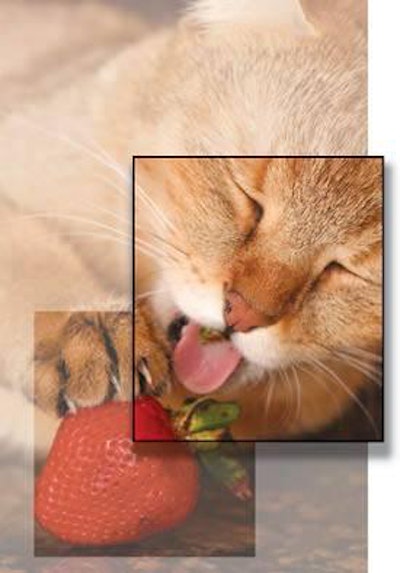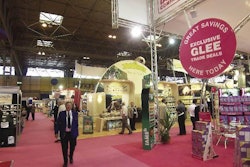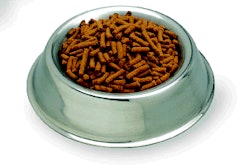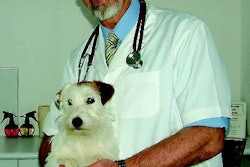
The hottest trends in petfood these days are "natural" and "organic." As pet owners are trying to eat healthier, their interest in these types of products for their pets continues to grow. In fact, sales of natural and organic petfoods are expected to outpace those in the overall petfood market soon.
This can be seen on the shelves, as 674 new SKUs tagged "natural" were brought to the US market in 2006, compared with 535 in 2005; while the number of "organic" SKUs rose from 62 in 2005 to 243 this past year (see Figure 1, p. 32). Getting in the game
According to David Lummis, senior pet market analyst with Packaged Facts, sales of natural petfood in 2005 reached US$520 million, and estimated sales for 2010 is US$1.042 billion, with the organic segment approaching US$100 million. This reflects compound annual growth rates of 15% and 25%, respectively. While much of this activity will remain centered among smaller marketers in the pet specialty channel, Lummis expects major mass marketers will also be firmly entrenched in natural/organic petfood within the next two years. Packaged Facts also expects to see leading natural petfood marketer Nutro Products primped up for sale to a major player in the market, with Mars as the top prospect.
Lummis notes that most of the new product activity in natural, and all of the activity in organic, continues to come from smaller marketers serving the pet specialty channel such as Castor & Pollux, Evanger's and PetGuard. For more information, Packaged Facts offers several reports on the natural petfood market including Natural, Organic and Pet Products, which will be available in September.
Private label segment
AnimalPharm (January 2007) recently referenced a study by the Private Label Manufacturers Association (PLMA) which shows that US consumers are purchasing private label products in US supermarkets, drug stores and mass merchandisers in ever greater numbers. According to this article, almost half of the respondents in the PLMA survey said that up to a quarter of all food they bought was private label, while a fifth said that at least half of all items they bought were private label. The article also revealed that because of the popularity of private label, mass merchandisers are expanding into channels beyond the usual food stores.
The private label market captured a 17% share of the global market last year and is still growing. In the global private label petfood market in particular, growth was 11% (US$978 million in 2005). In terms of percentage share, petfood ranked fourth at around 21%. This raises the question: What are private label petfoods doing to bring about such growth in this segment of the retail industry?
One way is to start producing premium-quality private label brand petfood products. According to Steve Rubow, a regular contributor/columnist for Private Label Magazine, "There is evidence of greater doting on pets with the advent of such things as pet insurance, gourmet foods, stylish clothing, etc. Retailers are not a group to invest very long in new items that don't sell, and we're seeing much more attention given to premium private label products (i.e., Ol' Roy Chicken Strips, Wegmann's Bruiser line, Safeway Select products) being brought into petfood."
Rubow also notes that future trends in private label brands will be led by retailers such as PetSmart. "They are a true innovator for petfoods and products and are a big player in private brands. Food stores can't go to the same extreme, but they watch PetSmart," he said.
Organic trends
In the organic arena, petfood manufacturers are beginning to see the merits of branching out into this hot category. According to the Organic Trade Association's 2006 Manufacturer Survey, organic petfood sales grew 40% to reach US$46 million (representing 0.19% of all US petfood sales) in 2005. Barbara Haumann, OTA press secretary, notes that the survey projects that sales of organic petfoods are expected to grow by about 36% in 2006, and by at least 24% each year for 2007 through 2010.
As more companies embrace the notion of manufacturing organic products, issues regarding proper production practices come to the forefront. "There definitely is a growth in interest in certification," says Jessica Walden, a technical specialist with Quality Assurance International Inc. Currently, the organic regulation under USDA's National Organic Program (NOP) does not cover the manufacturing of organic petfood products, which has caused some frustration in the petfood industry. This is because certifiers have had to certify petfood products to the organic handling requirements for human food. However, growing interest has inspired the NOP and the National Organic Standards Board to set up a Pet Food Task Force.
The task force has addressed this issue by acknowledging the existing regulations for petfoods, so organic petfoods will be able to compete equitably with the rest of the non-organic industry. The Interim Report of the NOP Organic Pet Food Task Force is available at www.ams.usda.gov/nosb/meetings/orgpetfood.pdf. Until the recommendations by the task force have been adopted by the NOP, and made regulation, organic petfood products can only be certified to the existing NOP regulation.
According to Walden, the biggest challenge for manufacturers is being able to devise a formulation that meets current organic regulations. Other challenges are ensuring that organic ingredients maintain their organic integrity from the moment they arrive until they are made into the finished product and are distributed.
Currently, the scope of the NOP does not cover petfoods. So, petfoods can make an "organic" claim without being certified. Walden notes, "Certification gives the consumer the assurance that the organic claim is a truthful one. Once the regulation is adopted by the NOP, the certification of organic petfoods will no doubt explode, because the demand is endless."















